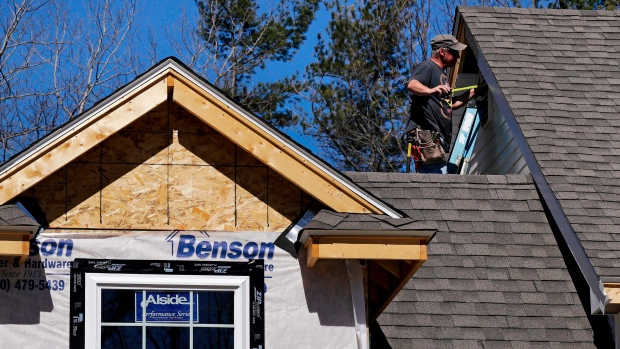
Centerbridge Partners’ Top Real Estate Dealmaker Rahm to Depart
Centerbridge Partners’ Billy Rahm, who oversees global real estate investing, is leaving the firm, according to people with knowledge of the matter.
Latest Videos
The information you requested is not available at this time, please check back again soon.

Centerbridge Partners’ Billy Rahm, who oversees global real estate investing, is leaving the firm, according to people with knowledge of the matter.

Uniti Group Inc. is in advanced talks to reunite with telecommunications provider Windstream in a merger that could be valued at up to $15 billion, including debt, according to people familiar with the matter. Uniti rose as much as 13%.
Figure Technology Solutions Inc. tapped Michael Tannenbaum as its new chief executive officer, ahead of the financial-services firm’s potential initial public offering.

Sales of new homes in the US bounced back broadly in March as an abundance of inventory helped drive prices lower.
Australian Retirement Trust has become the country’s latest pension fund to open a London office, as the fast-growing retirement sector hunts for deals beyond its backyard.
Jun 19, 2018
, Bloomberg News

U.S. new-home construction rose more than projected in May to the fastest pace in more than a decade while permits cooled for a second month, indicating mixed progress in the supply-constrained housing market, government figures showed Tuesday.
Key Takeaways
The increase in groundbreaking was concentrated in the Midwest, the only region to see a gain in May, as starts jumped 62.2 per cent to 266,000 -- the highest since 2006. The other three regions saw declines, though the drop was only 0.9 per cent in the biggest area, the South.
Permits rose in the Northeast and Midwest, consistent with the view that national demand for housing remains solid. That reflects the support that prospective buyers are getting from a strong labour market, lower taxes and improved finances.
At the same time, potential buyers are facing a squeeze on affordability as property values keep soaring and mortgage rates climb. Tariffs on lumber and other imported materials, shortages of qualified workers, and a scarcity of ready-to-build lots are all leading to elevated construction costs.
A National Association of Home Builders/Wells Fargo gauge of homebuilders’ confidence fell in June to match the lowest level this year amid higher lumber prices, according to a report Monday. While U.S. gross domestic product is on track to rebound in the April-June period after a slower start to the year, residential investment has been a drag on growth for three of the past four quarters, the worst stretch since the recession ended in mid-2009.
Other Details